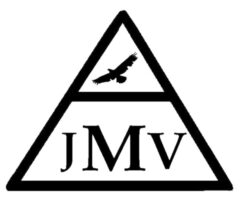Daniel Garner, Priyank Patel
Cite
Garner D, Patel P. Rapid review of patient-ventilator dyssynchrony. J Mech Vent 2022; 3(3):133-140.
Abstract
Patient-Ventilator Dyssynchrony (PVD) is often described as a patient “fighting” the ventilator. In fact, there are many forms of dyssynchrony some of which can very subtle. If unrecognized early, dyssynchrony can evoke patient discomfort, increase incidence of lung injury, lead to oversedation, and lengthen duration of mechanical ventilation.Since start of the COVID-19 pandemic, many clinicians without critical care experience have been compelled to manage patients requiring mechanical ventilation. Many academic centers, hospital systems, and physician groups have attempted to provide educational material in efforts to prepare clinicians on how to operate a ventilator. During this frenzied time, very few resources have been made available to clinicians to rapidly recognize ventilator dyssynchrony as it occurs when taking care of these patients. The figures presented in this article depict dyssynchrony in Volume Control Ventilation (VCV) with a decelerating ramp of flow and are hand drawn. While they may not perfectly represent waveforms seen on ventilators, the patterns shown and described below will be similar.
Keywords
Patient-Ventilator asynchronies, Trigger asynchronies, Cycle asynchronies
References
| 1. Gilstrap D, MacIntyre N. Patient-ventilator interactions. Implications for clinical management. Am J Respir Crit Care Med 2013; 188(9):1058-1068. https://doi.org/10.1164/rccm.201212-2214CI PMid:24070493 |
| 2. Akoumianaki E, Lyazidi A, Rey N, et al. Mechanical ventilation-induced reverse-triggered breaths: a frequently unrecognized form of neuromechanical coupling. CHEST 2013; 143(4):927-938. https://doi.org/10.1378/chest.12-1817 PMid:23187649 |
| 3. De Oliveira B, Aljaberi N, Taha A, et al. Patient-Ventilator Dyssynchrony in Critically Ill Patients. J Clin Med 2021; 10(19):4550. https://doi.org/10.3390/jcm10194550 PMid:34640566 PMCid:PMC8509510 |
| 4. Bailey JM. Management of Patient-Ventilator Asynchrony. Anesthesiology. 2021; 134(4):629-636. https://doi.org/10.1097/ALN.0000000000003704 PMid:33592102 |
| 5. Holanda MA, Vasconcelos RDS, Ferreira JC, et al. Patient-ventilator asynchrony. J Bras Pneumol 2018 ;44(4):321-333. https://doi.org/10.1590/s1806-37562017000000185 PMid:30020347 PMCid:PMC6326703 |
| 6. Oto B, Annesi J, Foley RJ. Patient-ventilator dyssynchrony in the intensive care unit: A practical approach to diagnosis and management. Anaesth Intensive Care 2021; 49(2):86-97. https://doi.org/10.1177/0310057X20978981 PMid:33906464 |
| 7. Perez V, Pasco J. Identifying asynchronies: Reverse trigger. J Mech Vent 2022; 3(2):88-91. https://doi.org/10.53097/JMV.10052 |
| 8. Perez V, Pasco J. Identifying asynchronies: delayed cycling. J Mech Vent 2022; 3(1):42-44. https://doi.org/10.53097/JMV.10045 |
